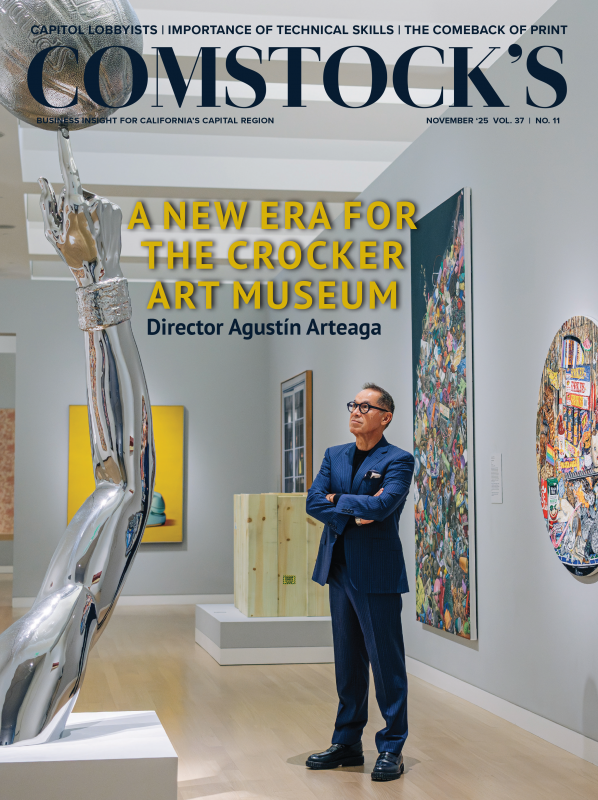Editor’s note: This opinion essay was written prior to recent developments in the Sunrise Tomorrow plan to revitalize Sunrise Mall.
Rain. I used to like the rain. That smoky aroma that rises from blacktop roads following freshly fallen rain — it’s not carcinogenic, right? But what I once welcomed, I now dread. Last winter, during a storm that lasted an entire month, our family experienced an expensive and stressful roof leak. Now when it rains, I find myself scanning the ceiling of my home, fearing the appearance of a brown spot on the white paint, and imagining the hidden damage created by small, undetectable streams of water.
My anxiety spiked during a recent winter storm that kept my two young children, my wife and I indoors. The solution was obvious: We needed to get out.
An internet search for “indoor activities kids” yielded a few results: indoor go-kart racing, a trampoline zone, and an arcade where I once spent $40 on a claw machine game. The prize? A stuffed yellow chicken for my son. The real prize? Avoiding the look of heart-crushing disappointment on his face. Hoping to skip the expensive chicken arcade, I scanned the map until happening upon a place I had not considered in 20 years: the Sunrise Mall.
Growing up in the Sacramento region, I had seen the rise and fall of local malls. Florin Mall and Birdcage Walk are long gone. For years, Arden Mall was the crown jewel — usurped sometime in the early 2000s by the extravagant Roseville Galleria. In the middle, there was the Sunrise Mall — never as fancy as Arden or the Galleria, but better than Florin and Birdcage. As a teen, I had only been to Sunrise Mall a few times, but there it was on the map: a short drive away, indoors, and open until 9:00 PM. The expensive chicken arcade was off the menu!
Related: The Rise and Fall of the Mall
In the dark, we pulled into the parking lot of the mall. The ratio of vacant parking spaces to vehicles was stark — of the two mall entrances, only one had a small cluster of vehicles nearby. Betting that a herd of SUVs was somehow safer, we parked near the others and gathered the children’s equipment that would let us survive indoors. Lightly running through the rain and puddles, we headed toward the entrance where we were immediately confronted by the grim reality of Sunrise Mall.
The mall entry consists of three sets of double doors, but only the middle set is functional. The doors on the left were properly locked, while the doors on the right were semi-shut with a lock and chain loosely woven through the handles. The middle set of doors would not be outdone; though functional, the steel kickplate at the bottom of one door was bent outward at a 45 degree angle, its sharp edge daring customers to slip by. How such damage occurred, and why it wasn’t immediately fixed, was an omen for the forthcoming experience. After an awkward sideways shuffle, we passed the blade of the kickplate and entered the mall with our shins intact.
When this photo was taken in 1972, the Sunrise Mall was one of
the Sacramento region’s newest and most profitable shopping
centers. (Center for Sacramento History, Sacramento Bee,
1983/001/SBPM02183)
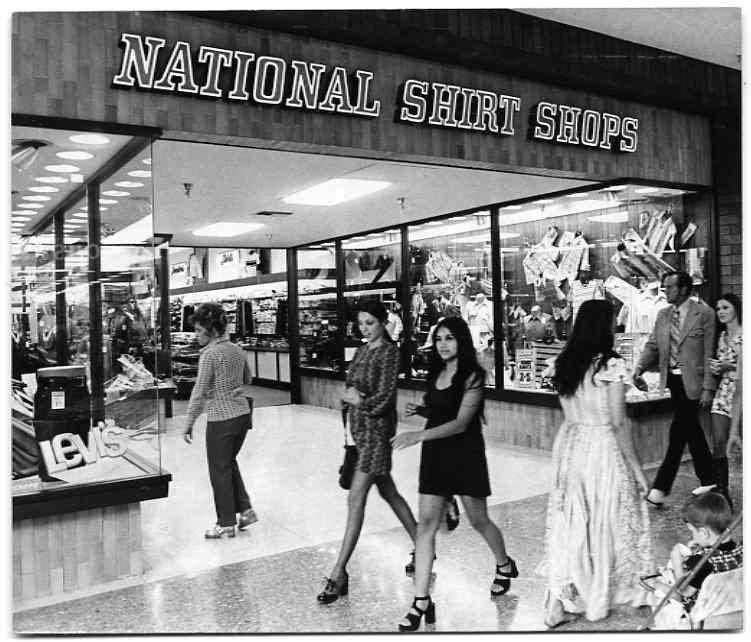
Proceeding down the corridor we reached the main crossroads of the mall and the first signs of life. On our left, and our right, were two different jewelers occupying premium corner store fronts. Each business was manned by exactly one man. My guess is both were sole proprietors of their respective businesses, and without a single customer in sight, I was saddened by the financial pressure they likely faced. I wished I could buy something from each of them.
Related: Malls Adapt to Changing Retail Patterns
Adjacent to the jewelry stores is the iconic water fountain of Sunrise Mall. Circular shaped, and about thirty feet wide, I had vague memories of the fountain being filled with a Smaug-like hoard of coins. Today, the fountain is no longer filled with water — tall plants surround the inner ledge of the fountain, partially obscuring the dusty and dry concrete bottom. A handful of coins were visible within the empty concrete bowl, likely thrown in by people with memories of the fountain’s functional days.
From the fountain, the mall splits in four directions. We had entered from the west, passing by the mysterious arcade. To the east was a Macy’s — though the store was open, the storefront window displays were empty and not a single perfume sample vendor was in sight. To the south, the stores were all vacant — likely a strategic choice made by the mall owners. Tantalizingly, to the north, there was a small hub of human activity — perhaps 30 people just beyond sight. Feeling adventurous, our family decided to clear the empty south wing first.
The southern corridor was obviously abandoned — amenities, like drinking fountains, were wrapped in plastic sheeting secured with blue masking tape. Along the main path, a trio of mismatched buckets were huddled together on the ground, protecting a faded and cracked tile floor. Looking up from the buckets, I recognized the signs of a roof leak — a bubble of sagging paint and a tear in the ceiling. Rain can be a real pain.
Related: Reviving Sacramento’s Downtown
We walked by stores in various stages of abandonment — some clean and completely empty, their windows plastered with faded signs indicating vacancy and square footage, while others still contained a rack or two of mismatched clothing. Halfway down the southern path is an alcove leading to a closed movie theater; tall brass framed glass doors gave the theater an elegant look, but on theme with the mall entrance the door handles were removed and spider web cracks ran across the tinted glass panes. I pressed my face against a non-broken pane and saw a surprising amount of garbage strewn on the lobby floor, likely left by some nostalgic adventurers who had broken in. I tried my luck and tugged on the nub by the missing door handle, but the door was securely shut. At least I didn’t have to pretend that I had the courage to go into the dark cavern.
Eventually, we reached the end of the south passage — a long ago closed Mervyn’s department store. As we turned around, we encountered a third human in the mall — a red-faced woman, somewhere in her 30s, quickly walking past us and out of breath. I gave her a brief nod and smile as she passed. In the solitude of the space, it seemed extraordinarily rude to not acknowledge her. The woman quickly disappeared down a small side hall, the unadorned narrow kind that leads to public restrooms. Staring at the emptiness of that hallway I concluded that the woman was heading to her doom. Or maybe she just needed to go to the bathroom. Either way, we never saw her again.
Standing at the abandoned end of the mall came with a slight sense of dread. Though my children were oblivious to the emptiness, my wife and I talked about the employees that had come and gone, the thousands of families that had visited, and the must-have teenage items that the stores had sold. They were all ghosts now, gutted by the efficiency of next-day home delivery and unbeatable prices offered by the giants of the internet.
My amateur psychological conclusion is the dead section of the mall was an unwelcome reminder of death — analogous to our temporary and brief existence. For children of the ‘80s and ‘90s the mall was the church of our youth, but for later generations the mall is just an inconvenient vending machine. What happened to the mall, will happen to each of us. And like the mall, ultimately, we will simply be forgotten.
OK, that was too deep. Back to the mall visit. As my family turned north, the only audible sound was the electric hum of a malfunctioning overhead light, but in the distance, we again saw the group of people at the far northern end of the mall. Like a herd animal missing his kin, my spirit improved as we passed the waterless water fountain and headed toward the comfort of civilization.
The interior of Sunrise Mall in 2007. (Photo by J.smith via
Wikimedia Commons, licensed under CC BY-SA 2.5)
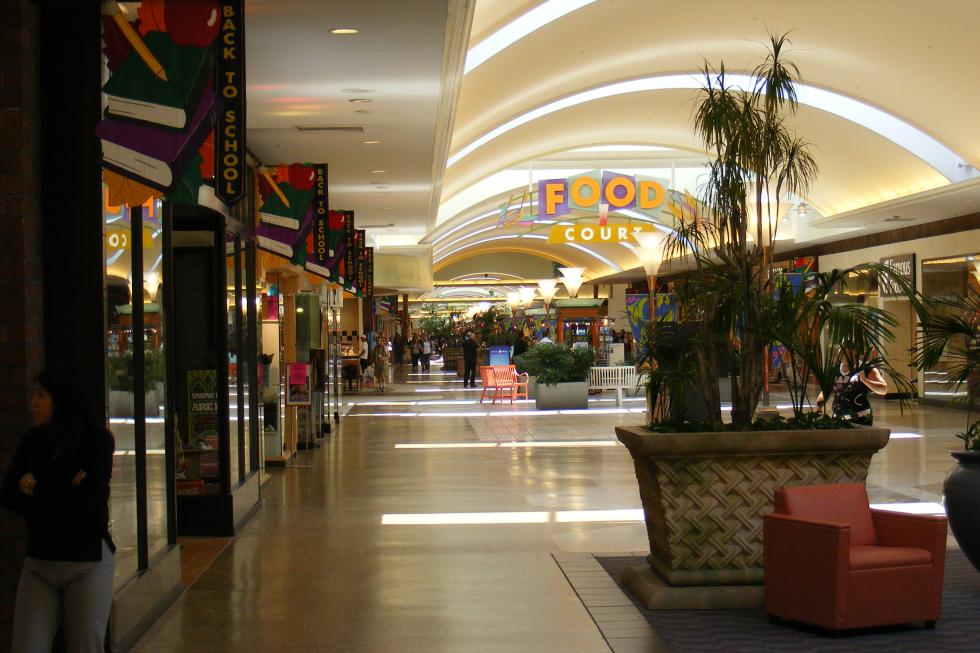
In the northern hall, semi-functional businesses were still open. Most were clothing stores, some fully stocked, others down to multi-color XXXL camouflage basketball shorts. Between these stores, on folding tables confined to the center of the walkway, was a small comic convention. With roughly 10 vendors, this was the group of saviors we had seen from the barren southern end of the mall. Best of all, these were my people. Nerds. Greater nerds than I could ever hope to be.
My children were excited to see the assortment of toys, comics, and fully dressed cosplayers. As we perused the tables, I told my children to pick something small to buy. Then I told them they could buy one more thing. Then another. I thought of the plight of the jewelry store owners at the mall entrance — although my family couldn’t afford jewelry for the sake of charity, we gladly supported the handful of comic con vendors in what way we could.
Related: Pop Culture Cons Fight for Attention in the Capital Region
Our time at the convention was nothing short of magical. A famous blue and white robot whirled about the aisle. Remotely controlled, it startled my children who refused to believe that the three wheeled demon wasn’t fully sentient — they never gathered the courage to approach it. We watched a group of cosplayers play-fight with foam swords and I listened as they exchanged information on techniques to recreate the look of metallic materials. In the moment, I knew they were living their best lives.
The exterior of Sunrise Mall in 2011. (By Sunrisemall via
Wikimedia Commons, licensed under CC BY-SA 3.0)
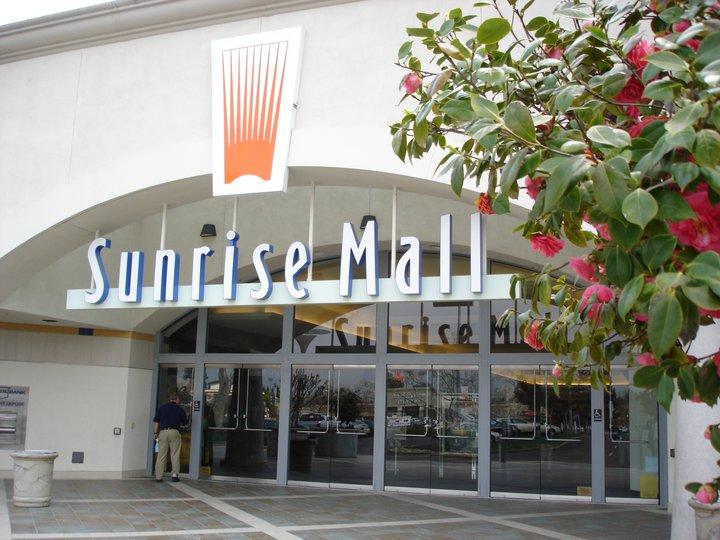
I have never been a shopper, nor particularly fond of public social events. Malls were simply not my thing. Along came the internet, and the ability to turn into a full-time hermit became instant and economical. Of course social experiences are not completely extinct, but in the last few years many of us have felt increasingly isolated. Ironically, it was in the vacant bones of a dying mall where I rediscovered a social connection that had withered. I promised myself that I would mend this part of my life.
After completing our lap through the tables, it was time for my family to leave. The closest mall exit would only lead to an empty section of the parking lot where we would surely be confronted by a 1980s gang. Lacking the appropriate karate training, I decided we should return the way we had come in.
Related: Free Parking? How Sacramento is prioritizing housing for people over housing for cars
Approaching the fountain for the third time, we stopped to sit along its brick edge. My children peered over the interior wall of the fountain, and my wife recounted her family’s routine whenever they visited — Orange Julius was a mandatory stop, but the store was long gone.
Just off to my right was a large navigation map of the mall with the classic “You are here” symbol. The map was old — nearly every numbered location corresponded to a business name. Viewing the map, it felt like the mall was proving to me that it was once glorious and strong, like an old athlete showing off his medals and trophies.
Lingering at the fountain for longer than planned, we were eventually joined by an elderly woman who sat just on the other side of the map. Soon after, an elderly man sat a short distance from the woman — not close enough to be associated with her, but not on the side of the fountain that faced the desolate south. Sitting together within one half of the fountain circle, I felt that our minds were adrift in the past.
The Sunrise Tomorrow Plan envisions Sunrise Mall as a new
“Sunrise Commons,” with high-density housing, public
transportation links, a food hall and other features now prized
by urban developers. (Rendering courtesy of City of Citrus
Heights/Gensler)
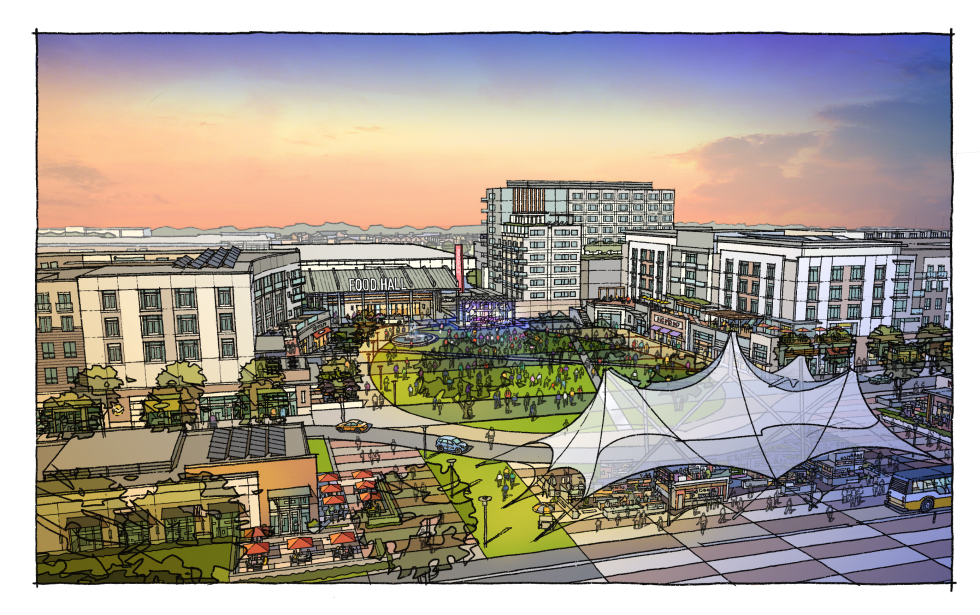
In some mystical way, I think memories are made of two parts one half lives in a person’s mind, and the other half is tied to the place where the memory was created. The mind can remember a place, and the place can remind the mind. The thought of losing a landmark like a mall, along with the millions of memories connected to it, saddened me.
Eventually we began our exodus. We passed the two corner jewelry stores where both proprietors had closed early. I peeked once more into the small arcade, still unable to decide if it was permanently closed. Outside, the rain had stopped. The children climbed into their car seats, and we slowly drove out of the lot – one less car to protect the small herd of vehicles in the darkness of the vast parking lot.
I had not visited Sunrise Mall in 20 years, and I don’t know if I would ever return, but I was grateful for the family memory that was created that night. A memory made possible by an archaic brick-and-mortar business fighting to stay alive in a society that had largely moved on. It’s an illogical thing to wish for, but I hope that the sun never sets on the Sunrise Malls of the world.
–
Stay up to date on business in the Capital Region: Subscribe to the Comstock’s newsletter today.
Recommended For You
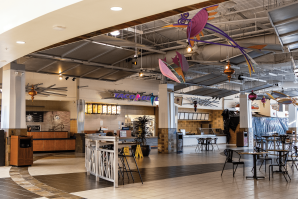
The Rise and Fall of the Mall
Sunrise Mall and other shopping centers seek to reinvent themselves in a changing retail landscape
As many as 25 percent of America’s roughly 1,000 malls will close within three to five years, according to a recent study by Coresight Research. Migration patterns, a shift towards online retail and the pandemic are all cited as factors in the struggle of retail centers.

Malls Adapt to Changing Retail Patterns
We invited the managers of some of the most successful shopping centers in our region for insight on how they managed during the pandemic, but more importantly how they stay relevant in a digital world.

Free Parking?
How Sacramento is prioritizing housing for people over housing for cars
After decades in thrall to the car, local developers and legislators are beginning to rethink parking and the role it should play in the city.
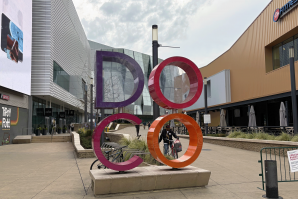
Five Years After the Shelter-in-Place Order, How Is Downtown Sacramento Doing?
Sacramento businesses face mixed results since first shutdowns associated with COVID-19 pandemic in March 2020
In the first year of the COVID-19 pandemic, Comstock’s followed four downtown Sacramento businesses and their broader sectors for a six-part series. On the fifth anniversary of the shutdowns, we checked in to see how they are faring.




